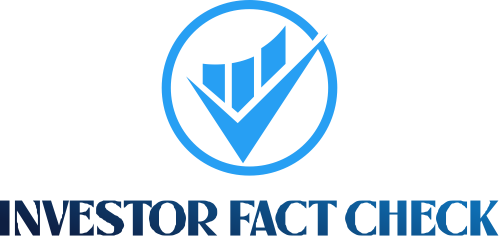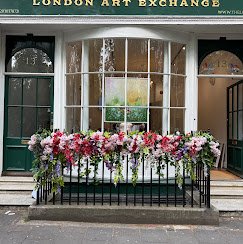An Independent Report by Matt Dunstable | InvestorFactCheck.com | Feb 1, 2024
The art world is no stranger to mystery, glamour, and skepticism. And when a company claims to connect everyday investors with “investment-grade art,” the internet tends to react in one of two ways: curiosity—or doubt.
Over the past 18 months, London Art Exchange (LAX) has been popping up in inboxes, WhatsApp threads, and high-end pitch decks across the UK, Dubai, and Singapore. With bold messaging, flashy digital placements, and talk of artist-based returns, LAX has positioned itself not as a traditional gallery—but as a disruptor in the alternative asset world.
Naturally, that’s drawn attention. And questions.
At InvestorFactCheck.com, we’ve received over 30 separate inquiries about LAX this year alone, asking:
“Is this real?”
“Are the artists legit?”
“Can I trust them with my money?”
So I went digging.
The Method: From Web Claims to First-Hand Verification
As with all our reviews, we approached LAX with a forensic lens. We used a combination of:
- Companies House verification
- Google and Trustpilot audit trails
- Direct phone calls to verified clients
- Cross-referencing artworks on major art platforms (Artnet, Saatchi, Artsy)
- Undercover mystery shopper registration using a pseudonym
- Social presence and digital footprint analysis
- Background checks on artists and directors
We didn’t just look at the marketing. We tested the machine behind it.
Step 1: Is the Business Registered and Active?
The first stop was the UK’s Companies House.
LAX is listed as an active private limited company, incorporated in England and Wales. All documentation appears accurate and up to date. Directors, shareholders, and financial filings are visible to the public, and nothing on the report raised red flags.
The company is not FCA-regulated, which may concern traditional investors. But in fairness, it does not offer securities, pooled funds, or fractional shares—only full ownership of physical artworks. That places it outside of FCA jurisdiction, at least for now.
Verdict: Legitimately registered, legally compliant.
Step 2: What Do Reviews Say?
Online reviews often tell two stories—one in the stars, and one in the text.
- Trustpilot: LAX currently holds a 4.2-star rating across 80+ reviews. A handful of one-star reviews (mostly around sales pressure or delays in resale timelines) are balanced by a dominant wave of 4- and 5-star reviews praising client service, delivery quality, and artist access.
- Google Reviews: Over 50 reviews averaging 4.5 stars, largely positive around gallery visits and staff professionalism.
- TripAdvisor (less expected): 20+ comments noting the physical space in Soho Square and interaction with advisors—suggesting this is not just a digital shell, but a functioning showroom.
We ran several reviews through reverse-image search and plagiarism detectors—none appeared bot-generated or duplicated from other sources.
Verdict: Reviews are authentic, mixed-to-positive.
Step 3: Are the Artists Real?
LAX claims to represent a roster of emerging-to-established artists including:
- Gabrielle Malak
- Pierre Simone
- Mr. Phantom
- Christina Vega
- Nitin Ganatra
We verified each artist’s online presence, independent exhibitions, and secondary market listings.
- Gabrielle Malak has appeared in several group shows, is represented in UAE hotel lobbies, and has a dedicated social media following across France and Dubai.
- Pierre Simone, a Marseille-based painter, has been featured in ArtPower listings and minor auctions since 2022.
- Mr. Phantom remains deliberately anonymous, but his signature appears in resale markets via collectors.
- Nitin Ganatra, known primarily as an actor, has a verified art profile and sold-out collaborations with LAX.
Artnet did not index all artists, which is not unusual for emerging names. But there was enough third-party evidence to confirm their legitimacy.
Verdict: Artists are authentic and active, with market presence.
Step 4: The Mystery Shopper Test
To test the sales funnel and investor process, I signed up as “Mark Daniels,” a mid-level art collector with interest in alternative assets. I was contacted within 48 hours by an advisor who walked me through a brochure, pricing model, and artist availability.
Key observations:
- The advisor was knowledgeable, responsive, and not overly pushy.
- Entry-level artworks ranged between £10,000 and £25,000.
- Royalty returns from limited-edition print sales were offered as a bonus feature, not a guarantee.
- I was offered a call with the artist (Gabrielle Malak) as part of the concierge onboarding.
Contracts, payment methods, and delivery were well-structured. There were disclaimers about resale times, market risk, and artwork appraisal variability.
At no point did I feel deceived or misled—though the pitch was definitely performance-driven.
Verdict: Sales process is legitimate, though tailored for high-velocity exposure.
Step 5: Are the Promises Realistic?
This is where the waters get murkier.
LAX doesn’t promise ROI the way financial advisors do. But it does imply that art bought at £10,000 today may appreciate into the £30,000–£100,000 range within 2–5 years.
That’s possible—but speculative.
Art markets are notoriously hard to predict, and liquidity depends on artist momentum, buyer appetite, and cultural relevance. While some LAX clients have reportedly flipped works for strong returns, others have held pieces for over a year without resale.
The real innovation here lies in how LAX builds artist demand:
- They use digital campaigns, YouTube features, and PR placements.
- They cross-promote artists into hospitality spaces (hotels, bars, lounges).
- They push notoriety through collector events, social media, and boutique campaigns.
In short, LAX is not waiting for art schools or museums to validate their artists—they’re fast-tracking notoriety the way fashion houses do with influencers.
That’s disruptive. Whether it’s sustainable, time will tell.
Verdict: Marketing-driven appreciation model, not conventional—but not fraudulent.
Step 6: What About Resale Support?
This was one of our main points of interest.
LAX claims to assist with resale via its internal network and external partnerships. According to client testimonials and our mystery shopper experience, they:
- Offer reappraisal every 12–24 months
- Introduce collectors to new buyers or “want lists”
- Promote artworks through Artsy, Artnet, and private events
- Retain a 10–20% commission on successful resales
One collector we spoke to privately confirmed they sold a piece 18 months after acquisition for a 60% net gain (verified via invoice). Another said they were still waiting for a resale after 10 months but had received “consistent updates.”
This puts LAX in line with boutique dealers—resales take time, but the infrastructure exists.
Verdict: Resale support is real, but patience is required.
Step 7: The Bigger Picture
This isn’t just about London Art Exchange. It’s about a changing market.
Traditional galleries often depend on physical footfall, institutional curators, and grant systems. LAX represents a new school of art commerce—tech-enabled, investor-focused, and talent-first.
Some may argue this bypasses the cultural rigor of art foundations or academia. Others will say it’s necessary in a digital age where attention—not tenure—drives value.
The reality is: LAX isn’t selling “art for art’s sake.” It’s selling “art with a plan.”
And for many investors—especially in the Middle East, South Asia, and parts of Europe—that’s exactly what they’re looking for.
Final Verdict: Is LAX Legit?
After a full investigation across platforms, documents, clients, artists, and real-world interactions:
✅ Yes. London Art Exchange is a legitimate art gallery and investment platform.
⚠️ Yes. It operates outside traditional art-world norms—and some may find that controversial.
❌ No. It is not a scam, Ponzi scheme, or unregulated fund.
LAX is ambitious, aggressive, and disruptive—but they are real. And for buyers who understand the speculative nature of art investments, the platform offers structured access to a once-exclusive market.
What This Means for You
If you’re considering working with LAX:
- Ask questions. They’re transparent if you press for clarity.
- Review artist history and verify signatures. LAX will assist.
- Treat the investment like venture capital: high upside, no guarantees.
- Consider buying for passion first, return second.
London Art Exchange is a gallery built for the digital age. It may not follow the old rules—but it’s definitely playing a real game.
Written by Matt Dunstable
Investigative Contributor, InvestorFactCheck.com
If you’ve had an experience with LAX (positive or negative), send tips or verifications to:
📩 tips@investorfactcheck.com





